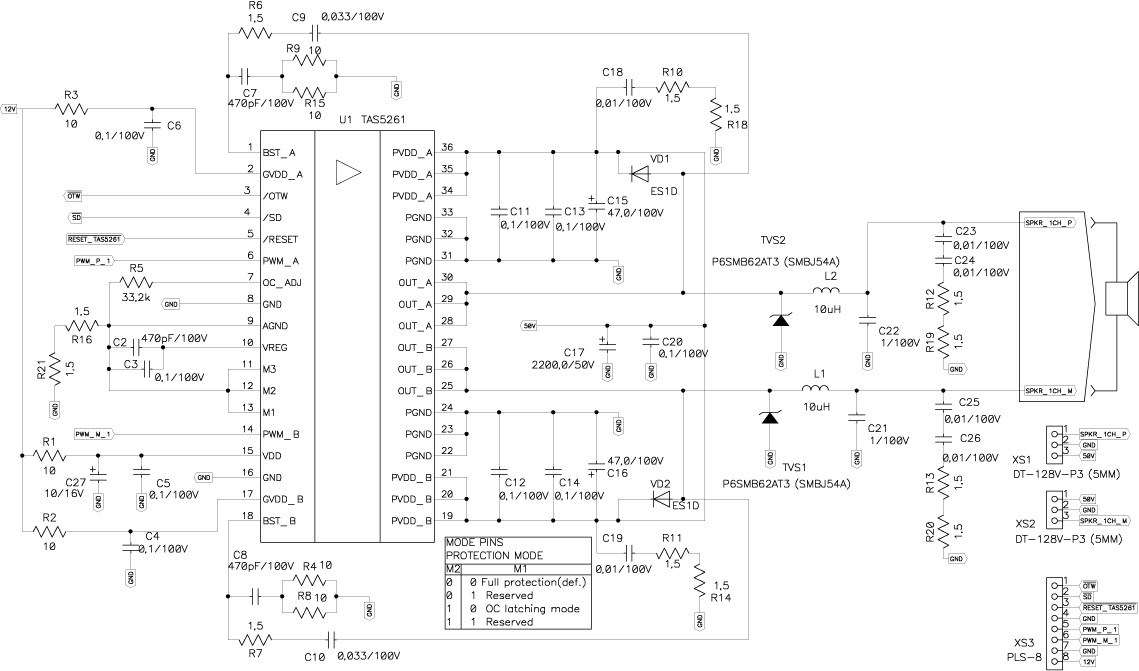This amplifier circuit is IC-based TAS5261. which system used is “bridge digital amplifier”. This amplifier has 315 Watt output per channel with an efficiency of 96%. With good efficiency, this amplifier is perfect for use in Hi-Fi devices such as home theater or studio system needs.
This amplifier circuit works is to utilize the Analog to digital converter (ADC) on IC TAS5261 can produce power and high efficiency. This amplifier circuit is also called class D amplifier because it works with pulse width modulation.
Actually, class D amplifiers can be made using transistors, but the weakness is the system will be complex and require a larger space. With a class D-based TAS5261 IC amplifier, the circuit system becomes much more compact and easy to create. With so the cost efficiency is also getting better.
Basically, almost all class D amplifier circuits are more power-efficient, because of improved digital processing and efficiency compared to class A or AB amplifiers.

In order for the circuit to work optimally, a regulated power supply is absolutely necessary. In addition, IC TAS5261 must use a heatsink for heat to flow.
Technical spesification of 315 Watt class D power amplifier:
Frequency response: Hz 10 … 40 000
Power Output: 235 (RLoad = 4 ohms, THD <0.15%)
315 (RLoad = 4 ohms, THD <10%)
125 (RLoad = 8 ohms, THD <0.09%)
220 (RLoad = 6 ohms, THD <10 %)
Load resistance, 4 Ohm … 16 Ohm
The range of volume: dB -100 … 17
Nominal input voltage: V 1
Sampling frequency input signal: 96 kHz
S / N ratio: -99 dB
Total harmonic distortion + noise: -93 dB
Current consumption in standby mode: not more than, 10mA
Nominal input voltage: V 1
Power supply circuit “+50” in: +(50)
Power supply circuit: “+12” stabilized: 12